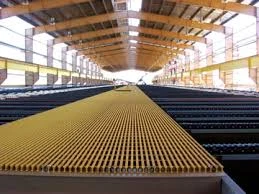
-
 Afrikaans
Afrikaans -
 Albanian
Albanian -
 Amharic
Amharic -
 Arabic
Arabic -
 Armenian
Armenian -
 Azerbaijani
Azerbaijani -
 Basque
Basque -
 Belarusian
Belarusian -
 Bengali
Bengali -
 Bosnian
Bosnian -
 Bulgarian
Bulgarian -
 Catalan
Catalan -
 Cebuano
Cebuano -
 China
China -
 China (Taiwan)
China (Taiwan) -
 Corsican
Corsican -
 Croatian
Croatian -
 Czech
Czech -
 Danish
Danish -
 Dutch
Dutch -
 English
English -
 Esperanto
Esperanto -
 Estonian
Estonian -
 Finnish
Finnish -
 French
French -
 Frisian
Frisian -
 Galician
Galician -
 Georgian
Georgian -
 German
German -
 Greek
Greek -
 Gujarati
Gujarati -
 Haitian Creole
Haitian Creole -
 hausa
hausa -
 hawaiian
hawaiian -
 Hebrew
Hebrew -
 Hindi
Hindi -
 Miao
Miao -
 Hungarian
Hungarian -
 Icelandic
Icelandic -
 igbo
igbo -
 Indonesian
Indonesian -
 irish
irish -
 Italian
Italian -
 Japanese
Japanese -
 Javanese
Javanese -
 Kannada
Kannada -
 kazakh
kazakh -
 Khmer
Khmer -
 Rwandese
Rwandese -
 Korean
Korean -
 Kurdish
Kurdish -
 Kyrgyz
Kyrgyz -
 Lao
Lao -
 Latin
Latin -
 Latvian
Latvian -
 Lithuanian
Lithuanian -
 Luxembourgish
Luxembourgish -
 Macedonian
Macedonian -
 Malgashi
Malgashi -
 Malay
Malay -
 Malayalam
Malayalam -
 Maltese
Maltese -
 Maori
Maori -
 Marathi
Marathi -
 Mongolian
Mongolian -
 Myanmar
Myanmar -
 Nepali
Nepali -
 Norwegian
Norwegian -
 Norwegian
Norwegian -
 Occitan
Occitan -
 Pashto
Pashto -
 Persian
Persian -
 Polish
Polish -
 Portuguese
Portuguese -
 Punjabi
Punjabi -
 Romanian
Romanian -
 Russian
Russian -
 Samoan
Samoan -
 Scottish Gaelic
Scottish Gaelic -
 Serbian
Serbian -
 Sesotho
Sesotho -
 Shona
Shona -
 Sindhi
Sindhi -
 Sinhala
Sinhala -
 Slovak
Slovak -
 Slovenian
Slovenian -
 Somali
Somali -
 Spanish
Spanish -
 Sundanese
Sundanese -
 Swahili
Swahili -
 Swedish
Swedish -
 Tagalog
Tagalog -
 Tajik
Tajik -
 Tamil
Tamil -
 Tatar
Tatar -
 Telugu
Telugu -
 Thai
Thai -
 Turkish
Turkish -
 Turkmen
Turkmen -
 Ukrainian
Ukrainian -
 Urdu
Urdu -
 Uighur
Uighur -
 Uzbek
Uzbek -
 Vietnamese
Vietnamese -
 Welsh
Welsh -
 Bantu
Bantu -
 Yiddish
Yiddish -
 Yoruba
Yoruba -
 Zulu
Zulu
Advancements in Gold Mining Drilling Bits for Improved Efficiency and Performance
Exploring Innovations in Gold Mining Drilling Bits for Enhanced Efficiency and Sustainability
In the quest for gold, the mining industry continually seeks out innovative technologies to improve efficiency, reduce costs, and minimize environmental impact. Drilling is a critical phase in gold mining, acting as the gateway to uncovering new deposits and operational enhancements. Recent advancements in drilling bit technology are proving to be transformative, significantly enhancing the parameters of traditional mining techniques.
The performance of drilling bits directly influences the effectiveness of resource extraction. Traditional bits have faced challenges, including wear and tear, inefficiency in penetrating hard rock, and significant energy consumption. To address these issues, manufacturers have turned to advanced materials and engineering techniques. For instance, polycrystalline diamond compact (PDC) bits have emerged as a leading solution. These bits offer superior hardness and wear resistance, enabling miners to drill deeper and faster while maintaining stability and precision.
Moreover, innovations in design have played a pivotal role in optimizing drilling performance. The development of hybrid bits, which combine PDC technology with traditional tungsten carbide elements, allows for seamless adaptation to varied geological conditions. This flexibility ensures that drilling can be conducted efficiently across diverse terrains, from soft sedimentary layers to the challenging hard rock formations common in gold mining.
exploring innovations in gold mining drilling bits for enhanced ...

In addition to improving drilling efficiency, new technologies are also focused on enhancing sustainability. One such innovation is the use of waterless drilling techniques, which minimizes water consumption in arid regions. These methods not only preserve local water resources but also reduce environmental disturbances associated with traditional drilling practices. Furthermore, advancements in sensor technology are being integrated into drilling operations, allowing for real-time monitoring of bit performance and geological conditions. This feedback loop enables quicker adjustments, increasing the accuracy of drilling operations while minimizing waste.
The advent of automation in drilling processes also marks a significant step forward. Automated drilling rigs equipped with intelligent software can optimize drilling parameters on the fly, reducing the need for human intervention and the potential for error. This innovation not only enhances productivity but also increases safety in what has traditionally been a hazardous occupational environment.
As the gold mining industry looks to the future, the emphasis on efficiency and sustainability will continue to drive innovation in drilling technology. Companies aiming to stay competitive must invest in these advancements, reflecting a commitment to environmentally responsible mining practices while meeting the global demand for gold.
In conclusion, the exploration of innovations in gold mining drilling bits is not merely a technical endeavor but a necessary evolution for the industry. By focusing on materials science, design engineering, and incorporating automation and sustainability efforts, the gold mining sector can enhance not only its productivity but also its overall impact on the environment and society. As these technologies continue to evolve, there is no doubt that the future of gold mining will be shaped by these transformative innovations.
Latest news
-
Exploring the Benefits of Top Hammer Drifter Rods for Enhanced Drilling PerformanceNewsJun.10,2025
-
High-Precision Fiberglass Winding Machine for GRP/FRP Pipe Production – Reliable & Efficient SolutionsNewsJun.10,2025
-
FRP Pipes & Fittings for Shipbuilding - Corrosion-Resistant & LightweightNewsJun.09,2025
-
Premium FRP Flooring Solutions Durable & Slip-ResistantNewsJun.09,2025
-
Premium Fiberglass Rectangular Tanks Durable & Lightweight SolutionNewsJun.09,2025
-
Tapered Drill String Design Guide Durable Performance & UsesNewsJun.09,2025









